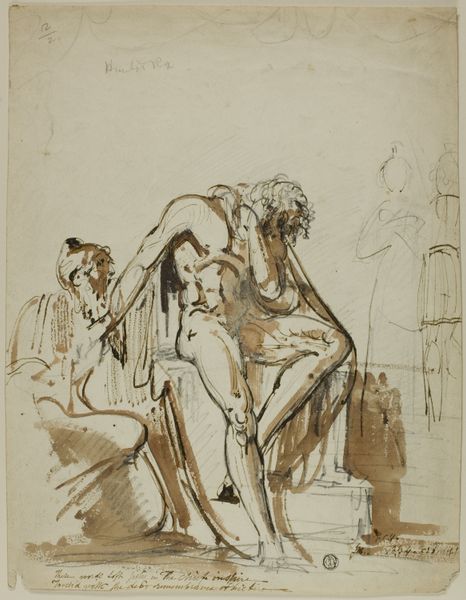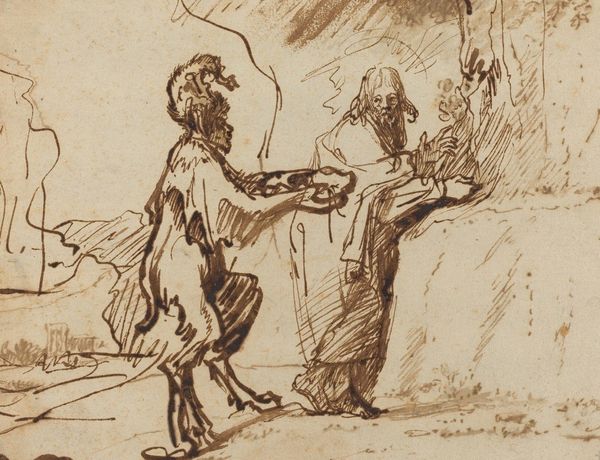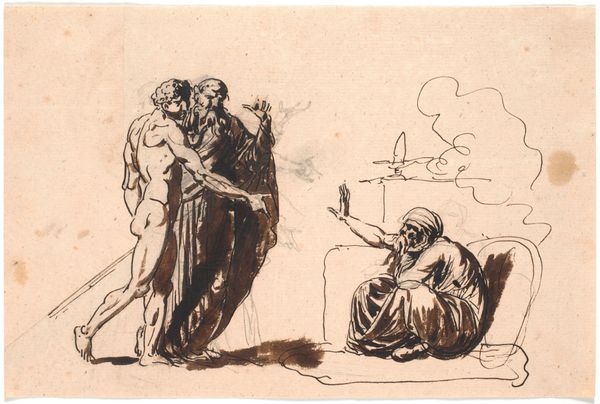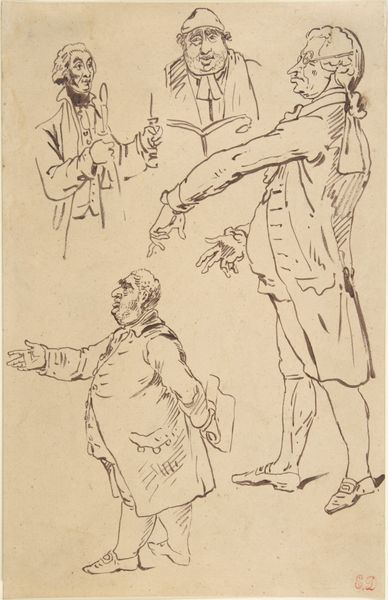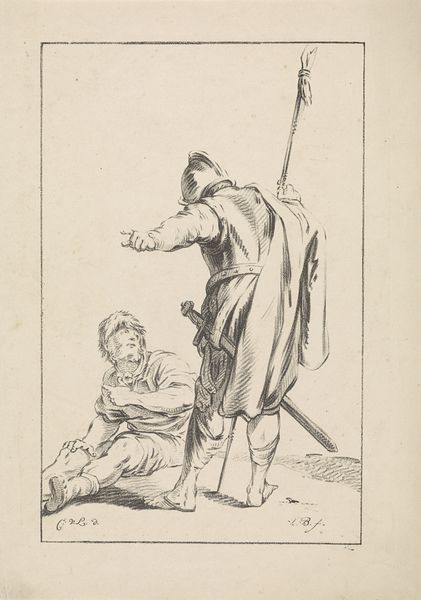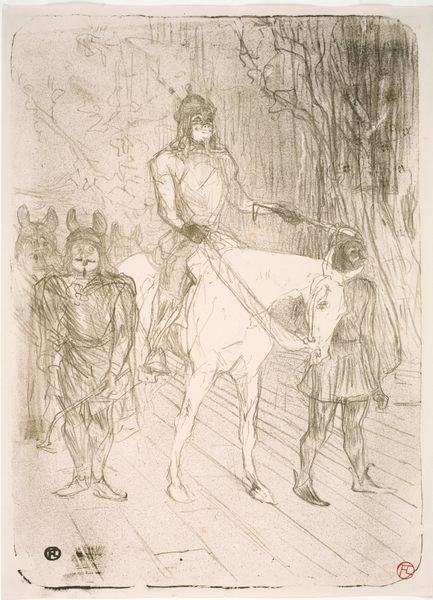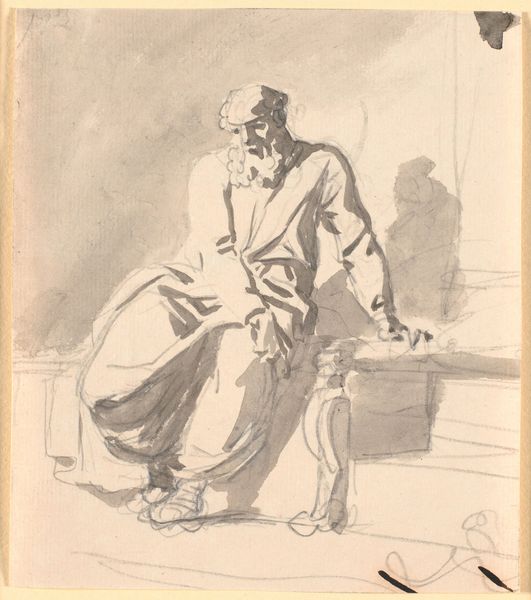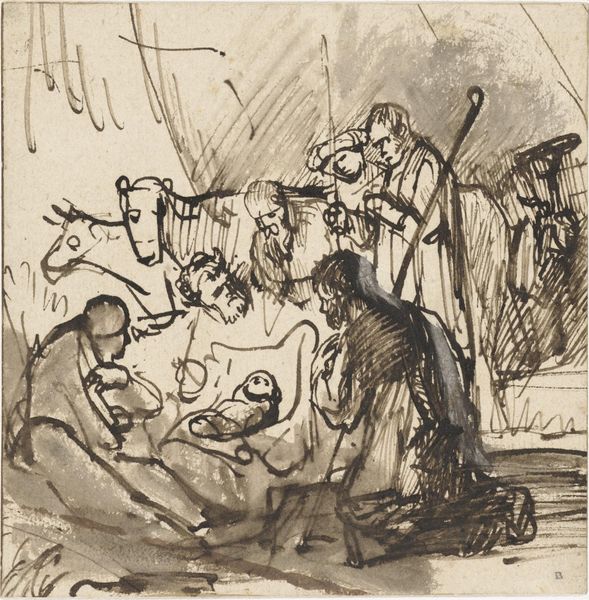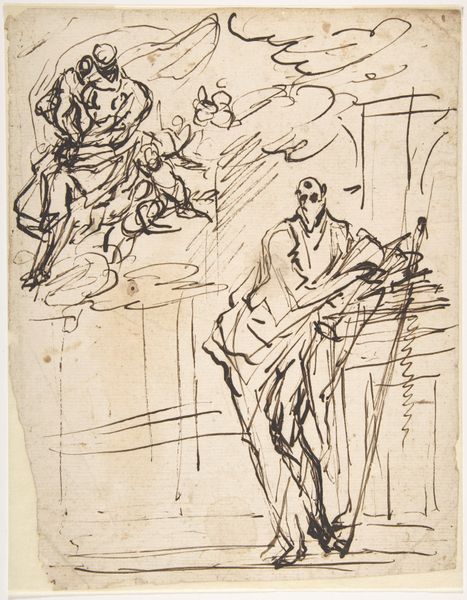
Ariosto, siddende med en lut, ved hans fødder våben, i baggrunden drager Amor en mand efter sig 1743 - 1809
0:00
0:00
drawing, ink
#
portrait
#
drawing
#
neoclacissism
#
ink drawing
#
ink
#
portrait drawing
#
history-painting
Dimensions: 206 mm (height) x 158 mm (width) (bladmaal)
Editor: We’re looking at a work on paper by Nicolai Abildgaard, created between 1743 and 1809. It's an ink drawing called "Ariosto, sitting with a lute, weapons at his feet, in the background Cupid drags a man after him." The monochromatic palette lends the piece a somewhat melancholic mood. What compositional elements stand out to you? Curator: The linear quality is quite striking. Abildgaard skillfully uses line weight to delineate form and suggest depth, though the effect is somewhat undermined by the drawing's conceptual layout, which scatters figures across the pictorial field, resulting in an incoherent perspective. How does the arrangement of these figures interact with your reading? Editor: I find the floating figures somewhat jarring and surreal, at odds with the realistic rendering of Ariosto himself. What's the relationship, visually, between Ariosto and these other characters? Curator: Their relationships is mainly conceptual; we could analyze it by discussing Abildgaard's approach to the visual problem he posed to himself. Consider the positioning of the figure of Ariosto against the ambiguous backdrop and the very different positioning of other subjects that belong to what may very well be understood as occuring within Ariosto's own mind. Note how these subjects are given roughly equal emphasis despite the radical variation in their execution. Editor: It sounds like you're suggesting it's a deliberate compositional choice to highlight a tension between representation and symbol. I learned a lot. Thank you. Curator: Indeed. This tension invites further examination, as does your suggestion that that drawing uses varied executions as compositional structures.
Comments
No comments
Be the first to comment and join the conversation on the ultimate creative platform.


